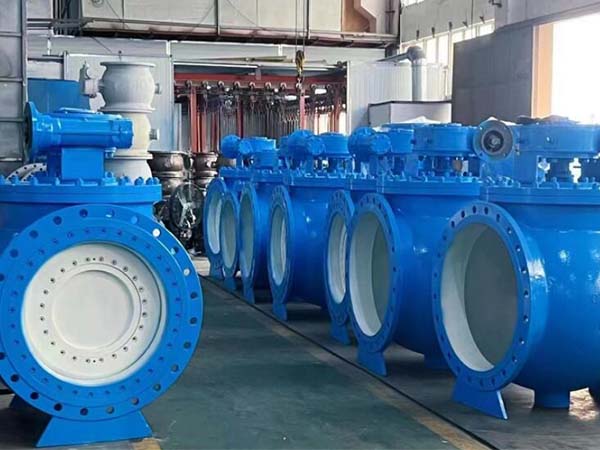What is an eccentric hemispherical valve? Working principle of eccentric hemispherical valve

Eccentric hemispherical valve is a commonly used control valve, whose main function is to control the flow rate and pressure of the fluid. Its working principle is to control the flow rate and pressure of the fluid by rotating the hemispherical valve core, thereby achieving fluid control and regulation. Below, we will provide a detailed introduction to the working principle, structural characteristics, and application fields of eccentric hemispherical valves.
1、 Working principle
The working principle of an eccentric hemispherical valve is to control the flow rate and pressure of the fluid by rotating the hemispherical valve core. When the hemispherical valve core rotates, fluid will flow from the inlet of the valve into the interior of the hemispherical valve core, and then flow out through the outlet of the hemispherical valve core. The rotation angle of the hemispherical valve core determines the flow rate and pressure of the fluid, so fluid control and adjustment can be achieved by controlling the rotation angle of the hemispherical valve core.
2、 Structural characteristics
The structural characteristics of eccentric hemispherical valves mainly include the following aspects:
1. Valve body: The valve body of an eccentric hemispherical valve usually adopts a spherical structure, with one side of the sphere being hemispherical and the other side being circular. The hemispherical side is the inlet of the valve, and the circular side is the outlet of the valve.
2. Semi spherical valve core: The semi spherical valve core is a component of an eccentric semi spherical valve, and its shape is similar to a semi spherical bowl. One side of the hemispherical valve core is protruding, and the other side is concave. The protruding side corresponds to the hemispherical side of the valve body, and the concave side corresponds to the circular side of the valve body.
3. Transmission device: The transmission device of the eccentric hemisphere valve is usually manual, electric, or pneumatic. Manual transmission devices typically use handwheels or handles, electric transmission devices typically use motors and reducers, and pneumatic transmission devices typically use pneumatic actuators.
4. Sealing structure: The sealing structure of eccentric hemispherical valves usually adopts soft sealing or metal sealing. Soft seals typically use materials such as rubber or polytetrafluoroethylene, while metal seals typically use materials such as stainless steel or titanium alloy.
3、 Application field
Eccentric hemispherical valves are widely used in industries such as petroleum, chemical, metallurgical, power, and water treatment, mainly for controlling fluid flow and pressure. Its advantages include simple structure, convenient operation, good sealing, strong corrosion resistance, and long service life. In the petroleum and chemical industry, eccentric hemispherical valves are commonly used to control high temperature, high pressure, and highly corrosive media such as acids, alkalis, salts, etc. In the water treatment industry, eccentric hemispherical valves are commonly used to control the flow and pressure of media such as sewage and wastewater. In summary, eccentric hemispherical valve is a commonly used control valve, which works by rotating the hemispherical valve core to control the flow and pressure of fluid. Its structural characteristics are simple, easy to operate, good sealing, strong corrosion resistance, and long service life. It has a wide range of applications and is mainly used in industries such as petroleum, chemical, metallurgy, power, and water treatment.









 +86-021-67895388
+86-021-67895388 shghfmc@163.com
shghfmc@163.com  93862333
93862333